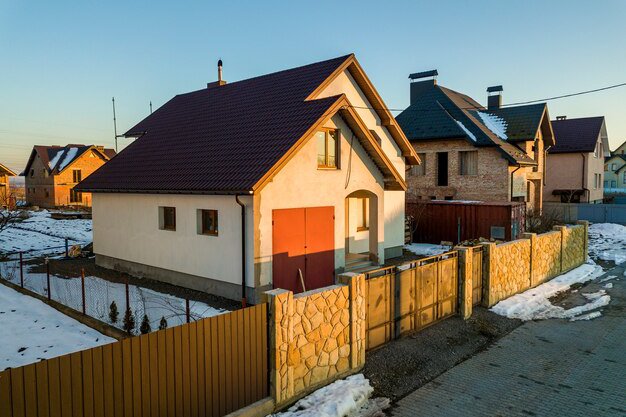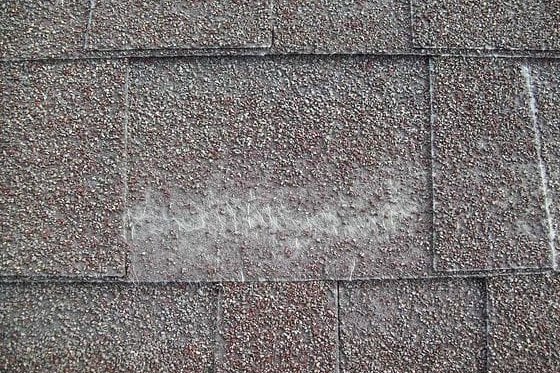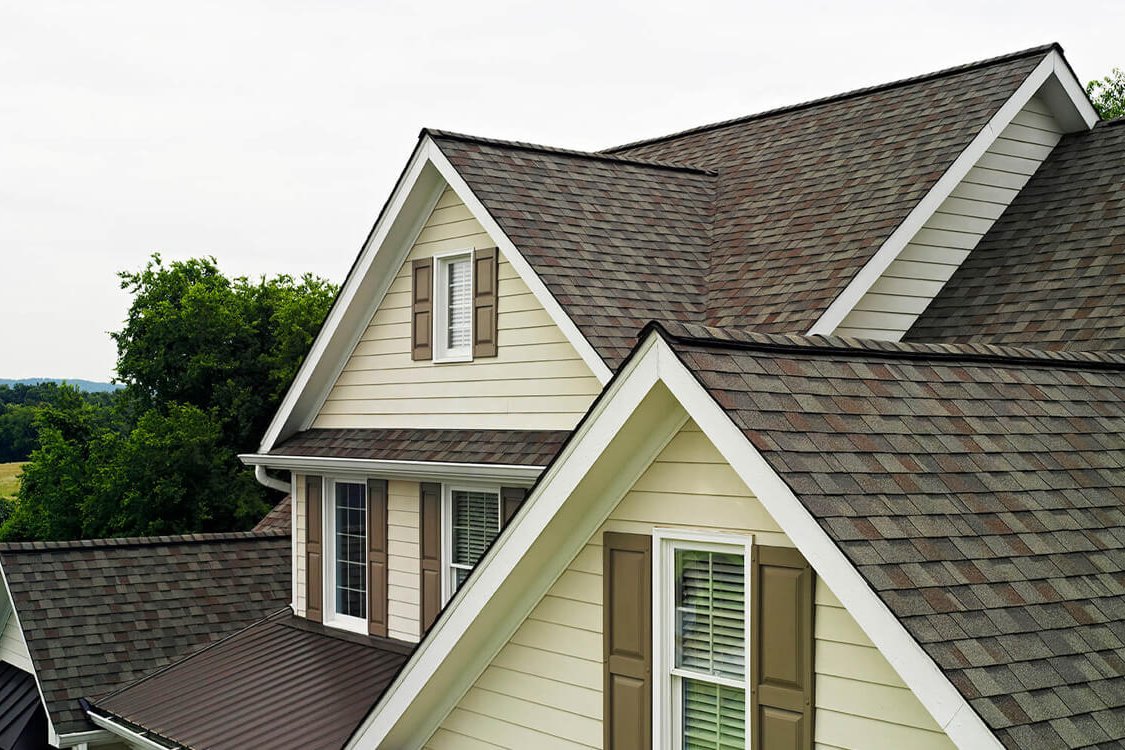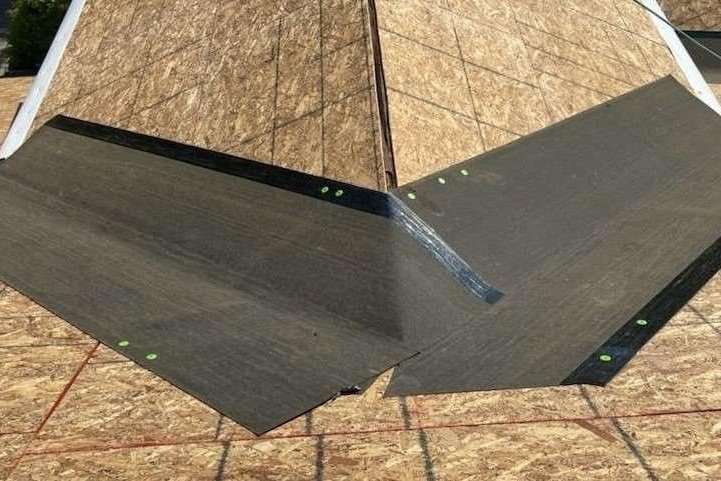Torch-Down Roofing vs. TPO: Alternatives for St Helens, Oregon
For properties with flat or low-slope roofs in areas like St Helens, Oregon, choosing the right roofing material is a critical decision impacting everything from structural integrity to energy efficiency and long-term maintenance. Historically, torch-down roofing has been a common choice, but modern advancements have introduced alternatives like TPO that offer significant advantages. Understanding the differences between these systems is essential for homeowners considering repairs, replacement, or new construction. This guide explores both torch-down and TPO roofing, helping you navigate your options for a durable and effective low-slope roofing solution.
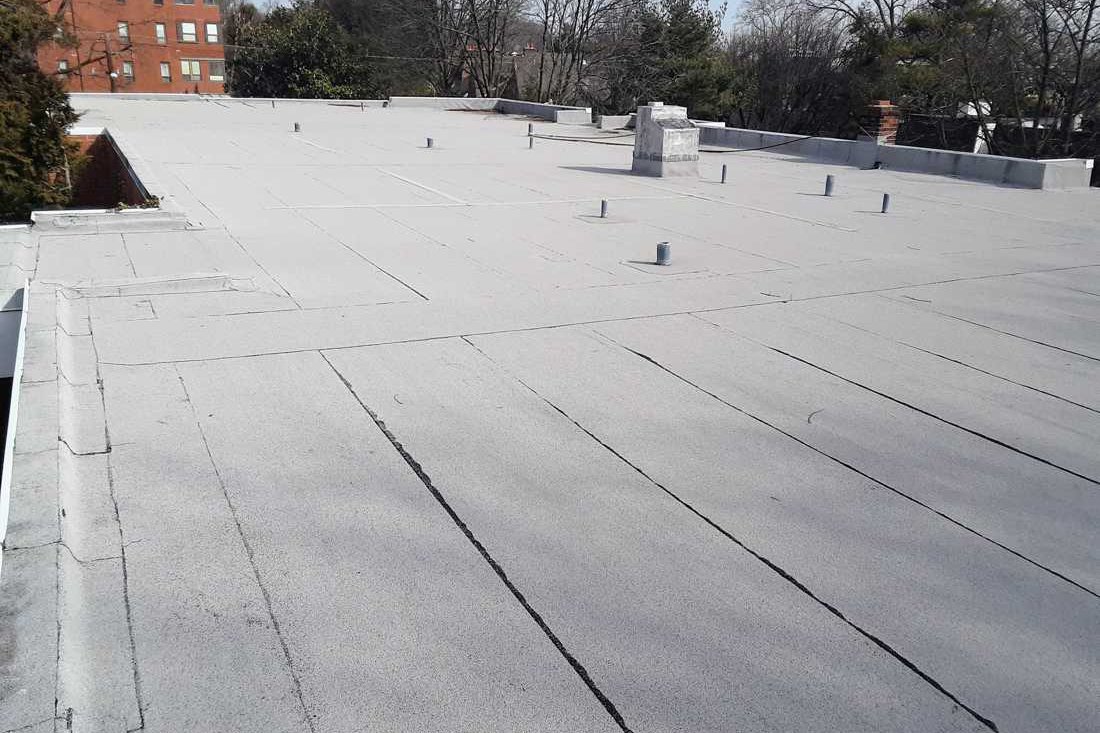
Understanding Torch-Down Roofing (Modified Bitumen)
Torch-down roofing, also known as modified bitumen (Mod-Bit), is a popular choice for low-slope or flat roofs. It evolved from traditional asphalt roofing, incorporating modifiers to enhance its flexibility and durability. Modified bitumen membranes are typically made from asphalt mixed with polymers like APP (Atactic Polypropylene) or SBS (Styrene-Butadiene-Styrene). These modifiers give the asphalt rubber-like characteristics, allowing it to withstand temperature fluctuations and movement better than standard asphalt.
The defining characteristic of torch-down roofing is its installation method. The material comes in rolls, and layers are fused together and adhered to the roof deck using an open-flame torch. The heat from the torch melts the underside of the membrane, creating a strong, waterproof seal as it cools and adheres to the substrate or the layer below it. This multi-layer system, often consisting of two or three plies, creates a robust barrier against water penetration.
Typical torch-down systems involve a base sheet, one or more modified bitumen plies, and sometimes a cap sheet finished with granules (similar to asphalt shingles) for UV protection and added durability. The seams where rolls meet are overlapped and torched together, forming the primary waterproof barrier. This method requires significant skill and strict safety protocols due to the inherent risks involved.
Pros and Cons of Torch-Down Roofing
Torch-down roofing has been used for decades, and its popularity stems from several factors, alongside notable drawbacks.
Pros:
- Proven Technology: Modified bitumen has a long history of use on low-slope roofs, and its performance characteristics are well understood.
- Durability: When properly installed in multiple layers, it creates a tough, puncture-resistant surface that can withstand foot traffic and minor impacts.
- Waterproofing: The torch-welded seams create a monolithic, waterproof membrane that is highly effective at shedding water on low slopes.
- Relative Cost: Historically, torch-down has been a cost-effective option compared to some other flat roofing systems, although prices vary.
- Repairability: Leaks can often be repaired by patching with new modified bitumen material and torching it into place, although this also carries the same safety risks as installation.
Cons:
- Significant Fire Hazard: The primary and most serious drawback of torch-down roofing is the inherent fire risk during installation. Using an open flame torch on a roof, often near combustible materials like wood decking, insulation, or eaves, requires extreme caution and is a leading cause of roofing-related fires. This risk extends to the building itself and surrounding structures.
- Odor and Fumes: The heating and melting of asphalt and bitumen during installation produce strong odors and fumes that can be unpleasant and potentially hazardous to installers and nearby occupants.
- Installation Sensitivity: Proper installation is critical. Inconsistent heating can lead to weak seams, inadequate adhesion, and premature failure. Overheating can damage the material. This method is highly reliant on the installer's skill and attention to detail.
- Weight: Multi-layer modified bitumen systems can be heavy, potentially requiring structural considerations for the roof deck.
- UV Degradation: Without a granule-surfaced cap sheet, the membrane can degrade quickly under UV exposure. Even with granules, the seams remain the most vulnerable points to UV damage over time.
- Temperature Dependence: Installation can be challenging in very cold weather, as the material is less pliable and achieving proper adhesion requires more heat.
Considering the potential risks associated with torch-down installation or simply exploring your options? Get a quick, no-obligation estimate for various roofing types.
Get your free instant roof estimate
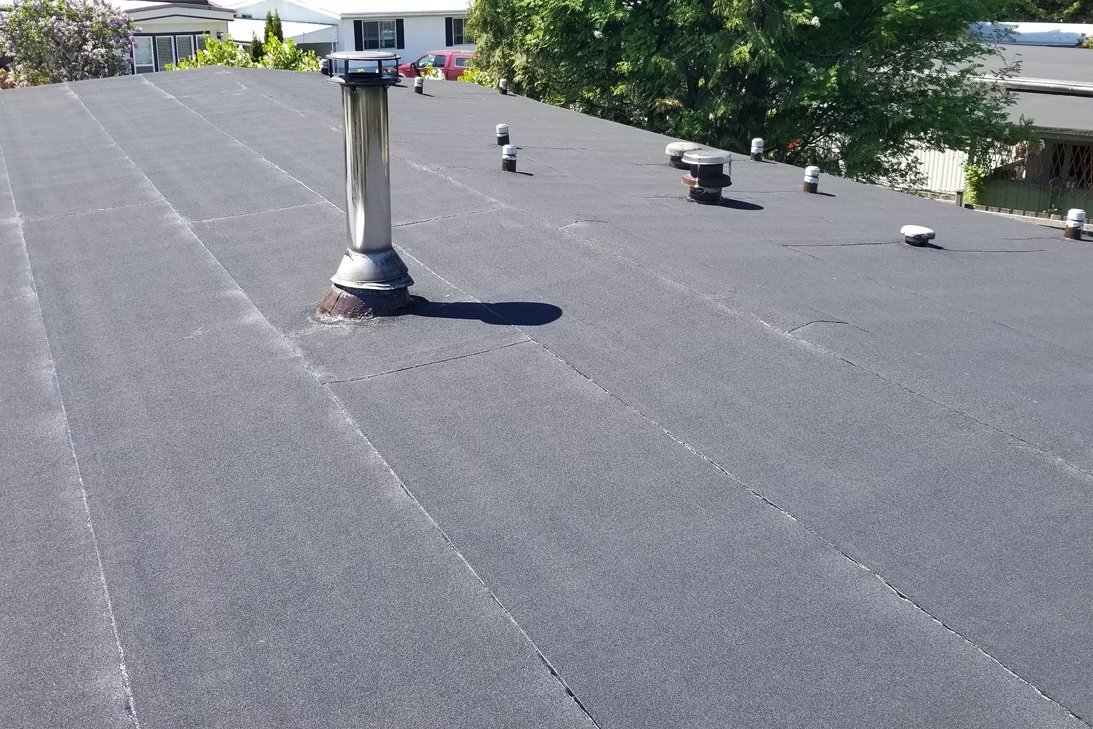
Introducing TPO Roofing: A Modern Alternative
Thermoplastic Polyolefin (TPO) roofing is a single-ply membrane system that has become increasingly popular for flat and low-slope roofs over the past few decades. It is composed of a blend of polypropylene and ethylene-propylene rubber, reinforced with a polyester fabric scrim. TPO membranes are manufactured in wide rolls, significantly reducing the number of seams required compared to multi-layer systems like torch-down.
The key difference in installation, and a major advantage, is that TPO seams are heat-welded using specialized automatic or hand-held hot-air welders. This process fuses the two layers of membrane together at a molecular level, creating a monolithic, watertight bond that is often stronger than the membrane itself. This method eliminates the need for an open flame, drastically reducing the fire risk during installation. TPO membranes can be installed in several ways: mechanically attached (fastened to the deck), fully adhered (glued to the substrate), or ballasted (held down by river rock or pavers). Heat welding the seams is standard across all installation methods.
TPO is typically white, though gray and tan are also available. The white surface is highly reflective, which contributes to its energy efficiency benefits.
Key Advantages of TPO over Torch-Down
TPO offers several significant advantages that have made it a preferred alternative to torch-down roofing for many applications:
- Enhanced Safety During Installation: The absence of an open flame during seam welding is the most critical advantage. This dramatically reduces the risk of fire compared to the torch-down method, making installation safer for workers and the property.
- Durability and Longevity: TPO is known for its excellent durability. It resists tears, punctures, and impacts well. The heat-welded seams are exceptionally strong and less prone to failure than torched seams, leading to a longer service life. High-quality TPO systems can last 20 years or more with proper maintenance.
- Energy Efficiency: White TPO membranes have high solar reflectivity and thermal emissivity. This means they reflect sunlight and heat away from the building, reducing cooling costs in warmer months. This "cool roof" effect can lead to significant energy savings, especially in sunny climates or during hot St Helens, Oregon summers.
- UV and Chemical Resistance: TPO is formulated to be highly resistant to UV radiation, ozone, and many common chemicals and pollutants, which helps prevent premature degradation and extends the roof's lifespan.
- Flexibility: TPO remains flexible in varying temperatures, allowing it to accommodate building movement and temperature changes without cracking or becoming brittle.
- Lighter Weight: Single-ply TPO systems are typically lighter than multi-layer torch-down systems, which can be an advantage for certain building structures.
- Cleaner Installation: The heat-welding process produces fewer fumes and odors compared to torching, resulting in a cleaner and less disruptive installation process.
Choosing the Right Flat Roofing System in St Helens, OR
Selecting between torch-down and TPO for a property in St Helens, Oregon, involves weighing the pros and cons against your specific needs, budget, and priorities. While torch-down has a lower initial material cost in some cases, the long-term benefits, enhanced safety, and potential energy savings of TPO often make it a more cost-effective choice over the life of the roof.
Consider the following factors:
- Safety: Given the significant fire risk, many property owners and roofing professionals now strongly prefer TPO due to its flame-free installation.
- Building Use: For residential properties or buildings where minimizing disruption and fire risk is paramount, TPO is generally the safer and more modern choice.
- Budget: While initial costs can vary, factor in the potential for energy savings and the typically longer lifespan of TPO when evaluating the long-term investment.
- Installer Expertise: Both systems require experienced installers, but the safety protocols for torch-down are far more stringent and unforgiving. TPO heat welding requires specific training and equipment but eliminates the open flame risk.
- Climate Considerations: Both systems perform well in various climates, but TPO's cool roof properties offer a distinct advantage in reducing cooling costs during warmer periods. The strong, heat-welded seams of TPO are also highly resistant to water intrusion, which is crucial in areas with significant rainfall.
While torch-down remains an option, the industry trend and for good reason, leans heavily towards safer, more durable, and energy-efficient alternatives like TPO for flat and low-slope roofing applications.
When to Consider Replacement or Repair
Knowing when your flat roof needs attention is crucial. Signs that indicate a need for repair or replacement for either torch-down or TPO systems include:
- Leaks: Any signs of water intrusion inside the building are a clear indicator.
- Ponding Water: Water that stands on the roof for more than 48 hours can accelerate deterioration.
- Cracking, Blistering, or Bubbling: These indicate the membrane is failing or separating.
- Visible Damage: Tears, punctures, or significant wear and tear.
- Separating Seams: The most common point of failure for both systems. For torch-down, look for seams that are lifting; for TPO, look for seams that are peeling or delaminating.
- Age: Both systems have a limited lifespan. If your roof is nearing or past its expected life, it's time for an evaluation.
Addressing minor issues promptly can extend the roof's life, but widespread problems or an aging roof typically warrant replacement.
If you've noticed signs of potential roof issues like leaks or visible damage, don't wait. Get connected with a local professional quickly.
Book a roofing appointment
For general evaluation, budget planning, or comparing costs before deciding, getting an instant estimate can be a great first step.
Get your free instant roof estimate
Selecting a Qualified Roofer
Regardless of whether you choose torch-down or TPO, the quality of the installation is paramount. A poorly installed roof, regardless of the material, will lead to premature failure and leaks. When seeking a roofer in the St Helens, Oregon area, look for contractors with specific experience in the flat or low-slope roofing system you are considering. Ask about their training, certifications (especially for TPO heat welding), safety protocols (particularly important if considering torch-down), and request references for similar projects they have completed.
A qualified roofer can assess your existing roof, discuss the best options for your specific building and budget, and ensure the installation is performed correctly, maximizing the lifespan and performance of your new roof system.
Making an Informed Decision About Your Flat Roof
Choosing the right roofing system for your flat or low-slope roof is a significant investment. While torch-down roofing has served its purpose for many years, the advancements in materials and installation techniques offered by TPO present a compelling alternative. TPO's enhanced safety during installation, superior durability, energy efficiency, and longer lifespan make it a modern, reliable choice for many property owners. By understanding the characteristics of both systems and consulting with experienced local roofing professionals, you can make an informed decision that protects your property for decades to come.
